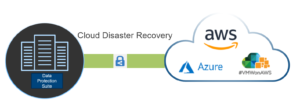DellEMC PowerProtect Data Manager for Cloud DR with AWS Cloud Part 1 – Deployment.
In this part 1 of blog series, I will cover how to configure PowerProtect Data Manager (PPDM) integrated Cloud Disaster Recovery (Cloud DR) for AWS Public Cloud.
In case you like to know how to deploy and configure PPDM, please refer my previous blog.
Cloud DR is integrated into PowerProtect Data Manager (PPDM). Cloud DR supports PowerProtect Data Manager (PPDM) as an On-Premises backup source.
This feature enables users to protect VMs by uploading VM image backups to the Public cloud object storage, and run automated DR operations on those copies, while providing DR orchestration capabilities.
Using Cloud DR customers can add the cloud as another cost-effective DR site, which eliminates the need to maintain an offsite data center. From PowerProtect Data Manager UI, you can configure Cloud DR to move backups to the cloud, and perform disaster recovery of these backups. Cloud DR in PowerProtect Data Manager supports Amazon Web Services (AWS) and Microsoft Azure.
I have deployed PowerProtect Data Manager (PPDM) on VMware Cloud Foundation (VCF) workload domain for the Data Protection. The VCF is running on VxRail HCI platform at On-Premises.
Before you begin make sure you have following:
- An AWS account that is configured and AWS user.
- A Data Domain system configured at On-Premises or Production site. I am using Data Domain Virtual Edition (DDVE)
- You will need AWS user’s Access Key & Secrete Key
- AWS Marketplace terms must be accepted before deploying the Cloud DR Server.
You can go through an official Dell EMC documents from support site to get more information on prerequisites.
To start deployment and configuration, login to PPDM.

In the PPDM landing page, select ‘Infrastructure’ and then select ‘Storage’
From the Cloud Disaster Recovery tab, click on Configure button.
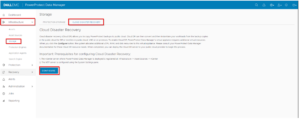
A warning message will be displayed, click ‘YES’.
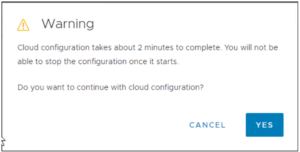
The Cloud DR initialization Process at On-Premises will be started. This initialization happens on the PPDM integrated Cloud DR.
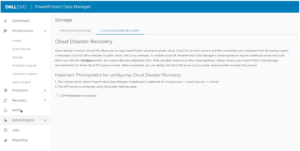
Cloud DR wizard will open. Next, select Public Cloud provider for the Cloud DR Server. I am using AWS.
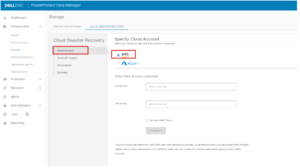
Enter necessary AWS account credentials. You will need AWS user’s ‘Access Key ID’ and ‘Secret Key ID’.
Select Accept AWS Terms to accept the AWS marketplace terms, and click Connect.
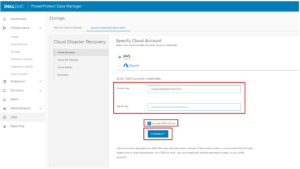
Cloud DR is connected to the AWS account.
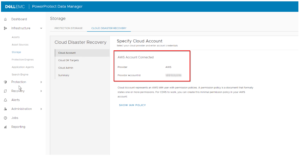
Once Cloud DR is connected to AWS account, ‘Cloud DR Target’ needs to be selected. This is where you’re going to select the AWS S3 bucket available in your AWS account.
I wanted to create a new bucket for the Cloud DR Target, thus here is the procedure to create the Bucket. In case you have existing bucket skip through this procedure.
From AWS console, Select S3 service and click Create Bucket.
Provide necessary information such as Bucket name, region.
I have selected my existing bucket to be used to copy settings for the new bucket.
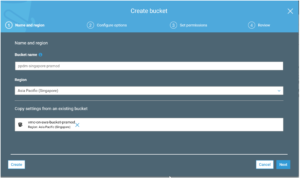
Provide necessary Configuration options such as versioning, server access logging, tags, encryption etc.
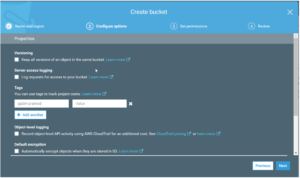
In the next screen, enable necessary permission based on your requirement for the bucket.
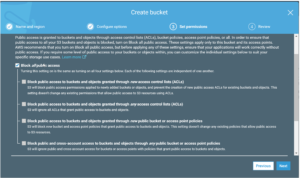
Finally, review and create the Bucket.
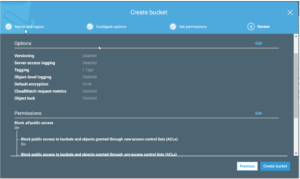
Once the Bucket is ready, we can go back to PPDM and select newly created AWS S3 Bucket.
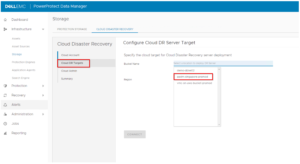
Notice the Cloud DR Server target bucket you selected also shows the AWS region.
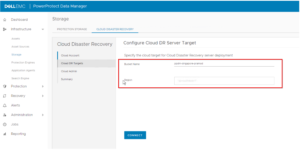
Review the Cloud Target details and Click ‘next’ to continue.
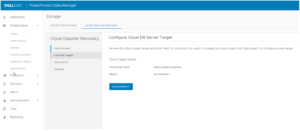
Next, specify Cloud Admin Email address and Password. This email address will use with Amazon SES and Amazon Pinpoint. You can read more about it on AWS site.
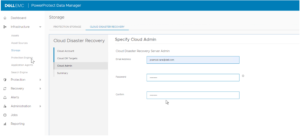
Summary page will be displayed with all the information provided above. Proceed to click ‘Deploy Cloud DR Server’ button.
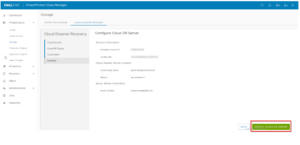
PPDM will trigger the configuration Job.
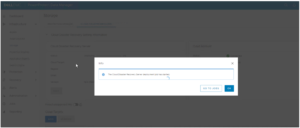
Monitor the Deployment status from PPDM.
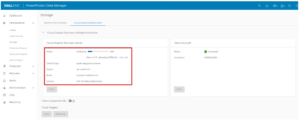
At one point, you will see deployment is actually launching an EC2 instance on your AWS account.
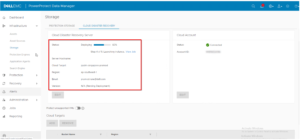
Notice EC2 instance is successfully launched and configured.

Finally, The Cloud DR Server is deployed and configured successfully.
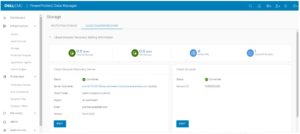
Next part of this blog series, I will cover how to create Protection Policy meant for the Cloud DR using PPDM.
Hope you enjoyed this post, I’d be very grateful if you’d help sharing it on Social Media. Thank you!
